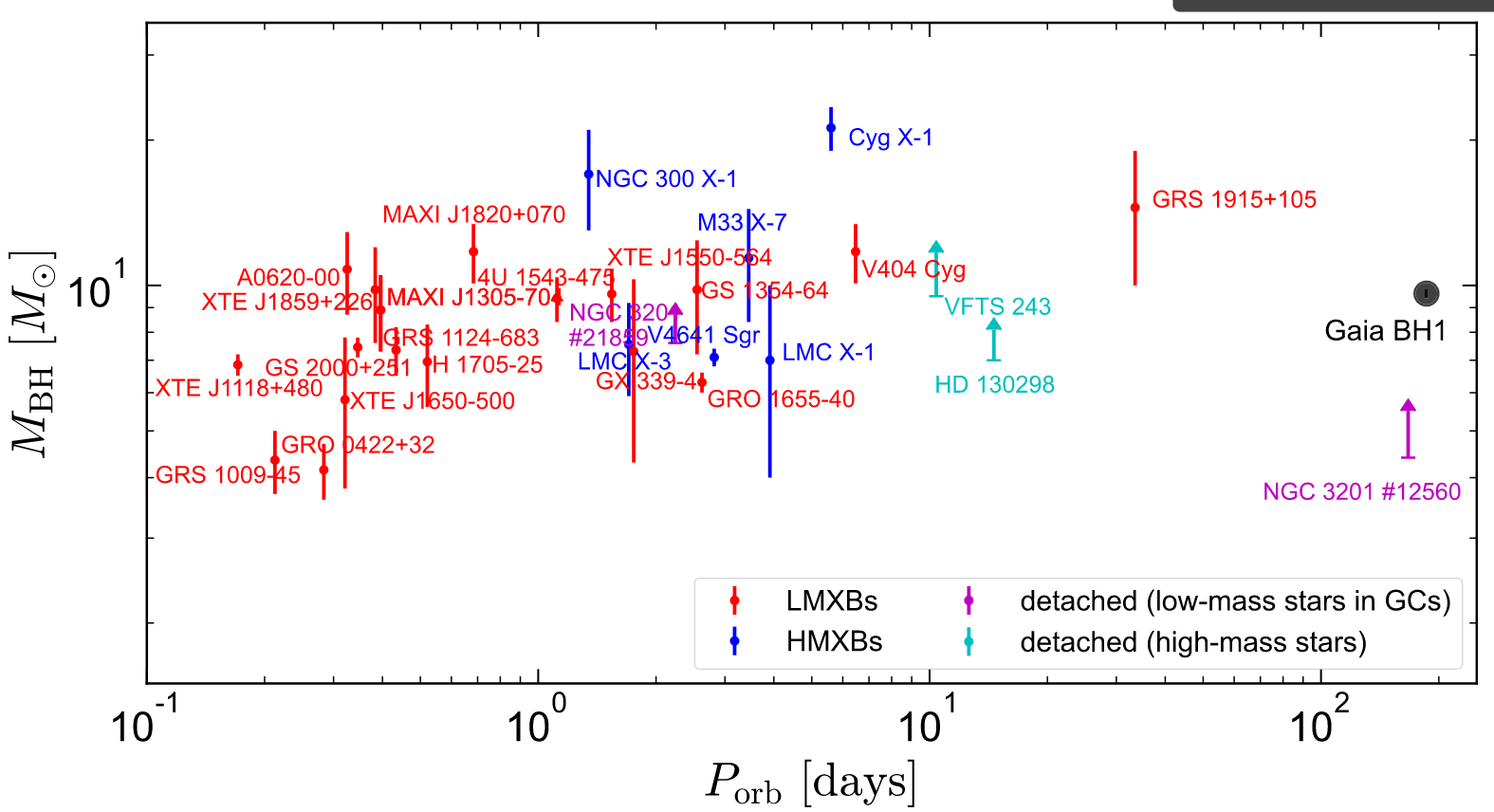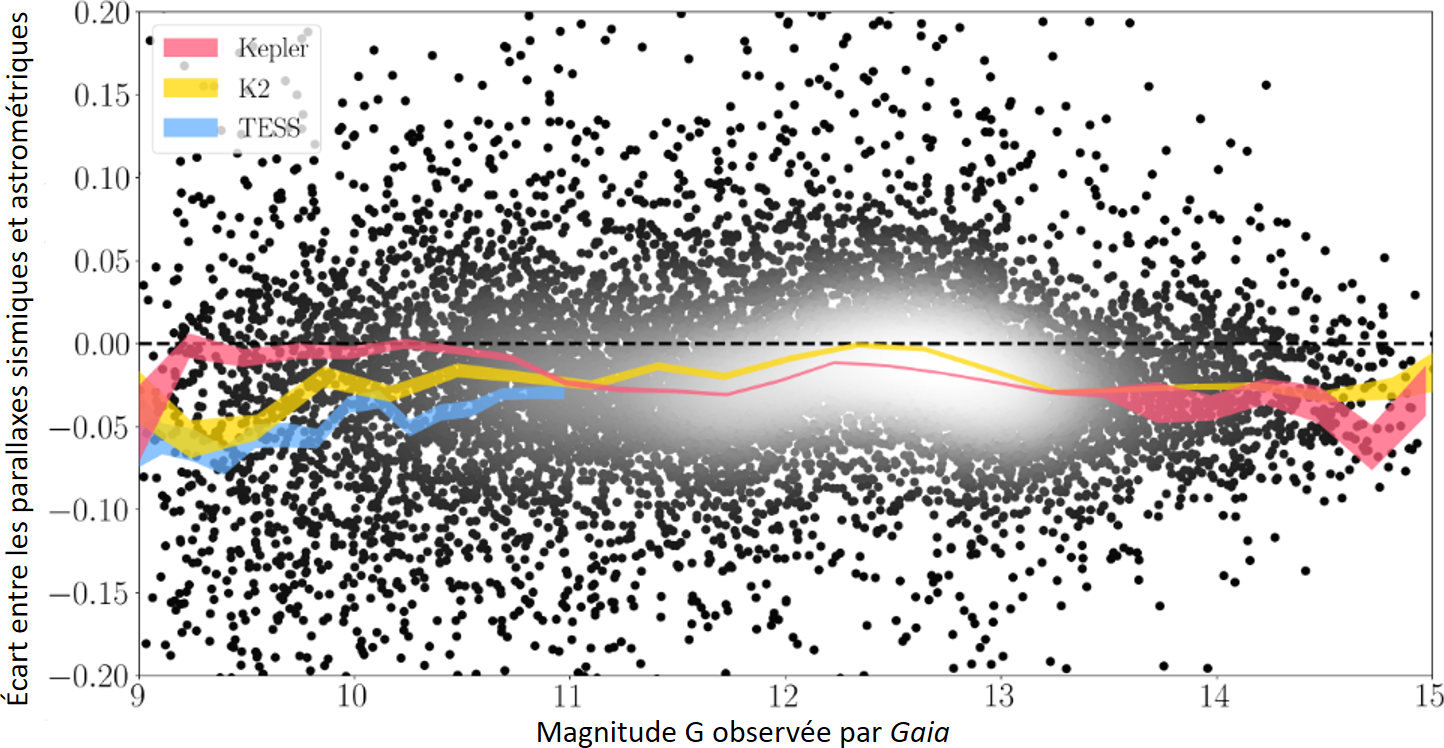1️⃣ Multiple stars, celestial tangos...
Single stars are only a minority : many are in couples, or even threesomes, or more if affinity takes them !
But their private lives are mostly unknown to us, because if the stars are far away, a couple is only seen as a single point of light. This is where Gaia comes in : observing for several years, it can detect the orbital movement of a couple using its three instruments.

If the two components are close together, it’s possible for one to pass in front of the other, causing a steady decrease in brightness. If the stars’ spectra have been measured, the variation in their radial velocities as they approach or move away from us indicates the presence of a pair.
Finally, for more separated pairs, the orbital motion of the point of light on the sky may be the signature.
Naturally, these movements are virtually undetectable, but Gaia is ultra-precise ! A catalog of 800,000 orbits has been produced [Gaia collaboration, Arenou et al., 2023], far exceeding the number already known.
What’s in it for us ? In particular, it’s one of the few ways of estimating the mass of stars !
2️⃣ The first black hole sleeping in the arms of the Galaxy
The vast majority of the few stellar black holes we know of have been identified in X-ray binaries. In these binaries, the X-ray emission is due to matter lost by the star orbiting the black hole as it is sucked into the black hole.
However, when a black hole has no companion close enough to steal matter from it, it emits no radiation at all, hence the difficulty in identifying these "dormant" black holes.
Black holes with a companion can be detected, even when they are not stealing matter from it, by astrometric and/or spectroscopic measurements of the companion’s orbital motion.
However, this technique requires repeated observation of a large number of stars over time, as black holes are rare objects.
Gaia’s astrometric and spectroscopic survey is ideal for finding these "dormant" black holes, around which a companion orbits.
Information published in the third Gaia catalog has enabled El Badry and colleagues to find the first "sleeping" black hole hidden between astrometric orbits [El Badry et al., 2023].

It’s a 9.6-solar-mass black hole, whose companion is a Sun-like star, orbiting at 1.4 times the black hole’s Earth-Sun distance, with a period of 186 days. It is also the closest black hole to Earth currently known, at just 1,561 light-years.

The discovery of this "sleeping" black hole paves the way for the study of this hitherto unknown population. It is expected that there will be dozens, if not hundreds, of dormant black holes in the binary catalog of the future Gaia DR4 catalog.
3️⃣ When asteroseismology and astrometry meet
Just over 20 years ago, the study of stars underwent a revolution with the development of asteroseismology. This technique studies the vibrations of stars (analogous to the seismic waves excited by an earthquake on Earth) to probe their interior.
Astrometry, Gaia and asteroseismology share common interests :
Astrometry can be used to calibrate the seismic scaling relationships that link stellar tremors to the properties of stars, providing their masses and radii.
Asteroseismology, meanwhile, provides an independent measure of Gaia’s parallax zeropoint, probing red giant stars at great distances in the Galaxy [Khan et al., 2023]. In addition, seismic measurements can be used to estimate the age of stars, enriching galactic archaeology work that traces the history of stellar populations in the Milky Way.

About this chapter :
Authors : Frédéric Arenou, Benoît Mosser, Pasquale Panuzzo
Laboratories of Paris Observatory - PSL : GEPI, LESIA
Articles presenting the results :
- El Badry et al, 2023, MNRAS, 518, 1057 (https://doi.org/10.1093/mnras/stac3140)
- Gaia collaboration, Arenou et al., 2023, A&A, 674, 34 (https://doi.org/10.1051/0004-6361/202243782)
- Khan et al, 2023, A&A, 667, 21 (https://doi.org/10.1051/0004-6361/202346196)
Links (in French) :
https://gaia.obspm.fr/la-mission/les-resultats/article/gaia-et-les-etoiles-non-simples-un-tresor
